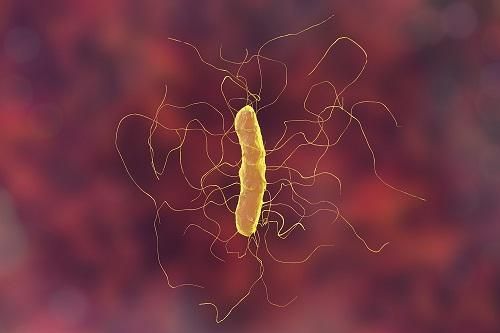Uptick in rCDI Coincided with COVID-19, According to New Analysis
Data from New Haven County, Connecticut, suggests the pandemic might have hurt efforts to curb recurrent CDI.

Five years of data from a county in Connecticut suggest the arrival of the coronavirus disease 2019 (COVID-19) pandemic led to an increase in cases of recurrent Clostridioides difficile infection (rCDI).
Before that, according to the study’s authors, the overall trend had been downward. The data were published in the journal Emerging Infectious Disease.
People with CDI have a roughly 30% risk of recurrence, noted corresponding author James Hadler, MD, MPH, of the Yale School of Public Health. Cases of CDI tend to become more severe with each recurrence a patient experiences.
Historically, one of the most common places people have become infected with CDI has been healthcare facilities. Hadler and colleagues wrote that efforts to reduce healthcare-associated CDI appear to be working, but they said the incidence of community-associated (CA) cases remains stable.
The investigators wanted to see if they could identify trends in rCDI and also identify risk factors for recurrence. They decided to look at 5 years of data from the Healthcare-Associated Infections Community Interface (HAIC) program, which is part of the Connecticut Emerging Infectious Disease Program. The new report includes data spanning from January 2015 through December 2020 and focuses on residents in New Haven County, Connecticut.
Out of a total of 4301 cases of CDI in which chart reviews were available, the investigators found that 12.0% of cases were followed by a recurrence. For this study, rCDI was defined as a recurrence 2-8 weeks after the first infection. However, those rates changed significantly over time, creating what the authors called a “U-shaped time trend.”
In 2015, there were 18.1 cases of recurrence per 100 incident cases of CDI. However, between 2016 and 2019, rates fell to between 12.1 and 13.2 cases per 100 incident cases. In 2020, after the arrival of the COVID-19 pandemic, the rate increased to 16.9 cases of recurrence per 100 incident cases.
“When stratified by epidemiologic class of CDI, the increase in rCDI was largely attributable to an increase in recurrent HCFO-CDI (healthcare facility-onset CDI) in 2020 and, to a lesser extent, small, gradual increases in recurrence rates for CA-CDI during 2018–2020,” they said.
The authors said it is not exactly clear why healthcare-associated cases would increase in the pandemic. They noted that one recent study suggested that high rates of hospital admissions associated with COVID-19 did not appear to lead to an increase in incident CDI.
“However, that study did not specifically look at rCDI,” they added.
When investigators sought to identify medical factors associated with rCDI risk, they found 2. The most pronounced was antecedent nitrofurantoin use (odds ratio [OR] 2.37; 95% confidence interval [CI] 1.23-4.58). The authors noted that nitrofurantoin is known to have a minimal effect on bowel flora, and thus one might assume the link between its use and rCDI might be a reflection of higher rates of multiple antibiotic prescriptions among older patients.
“However, after controlling for overall antibiotic use, nitrofurantoin use remained a significant risk factor for rCDI,” the authors noted.
The other risk factor for rCDI noted in the study was a history of malignancy (OR 1.51; 95% CI 1.11-2.07). This association “could reflect an ongoing need for antibiotic therapy, cytotoxic chemotherapy, or both, which could increase the risk for rCDI,” they said.
